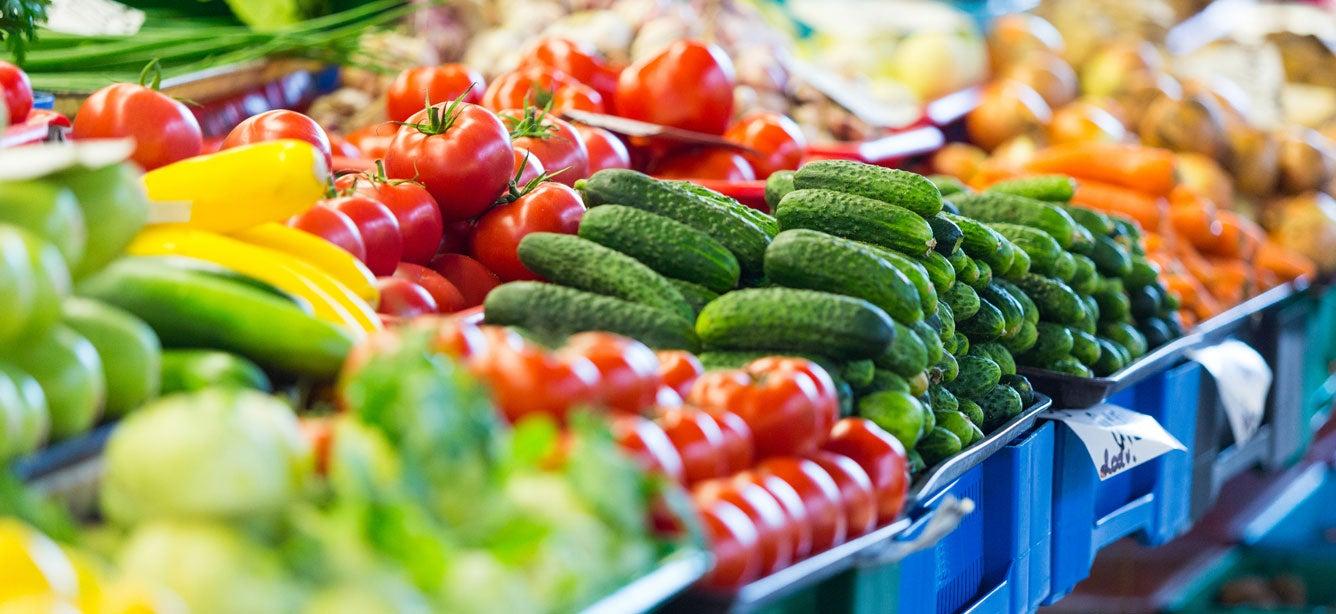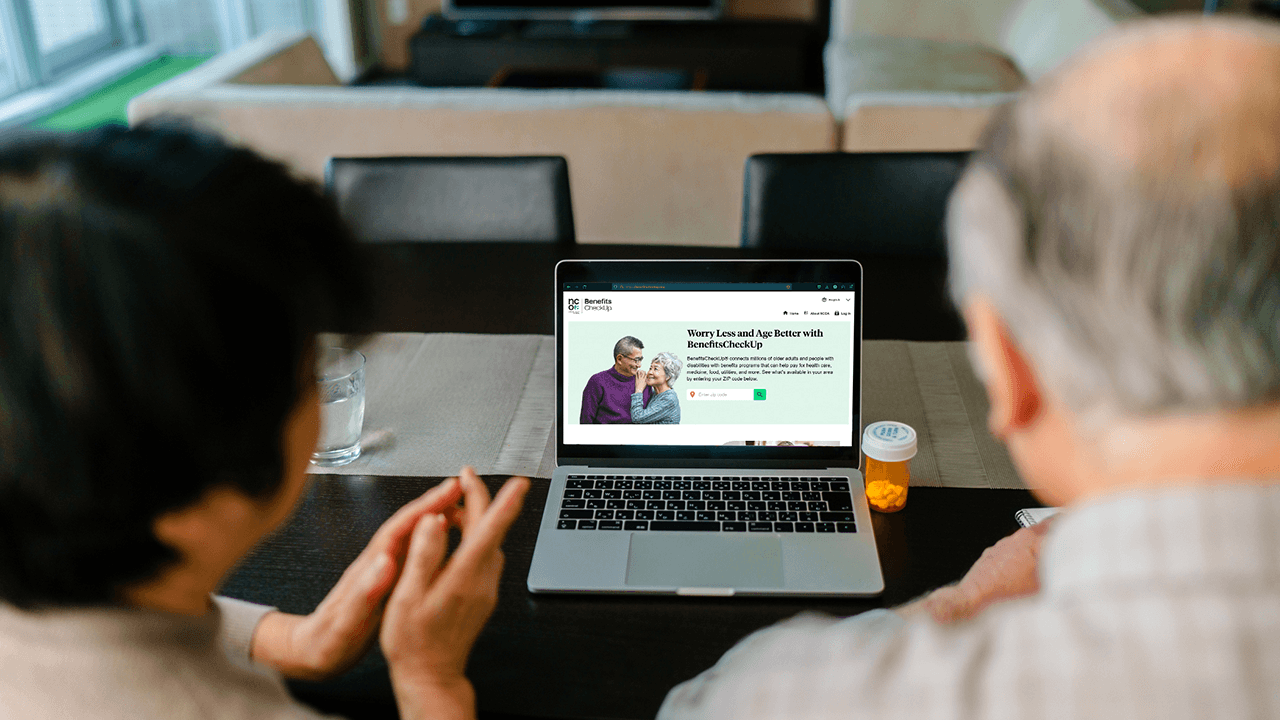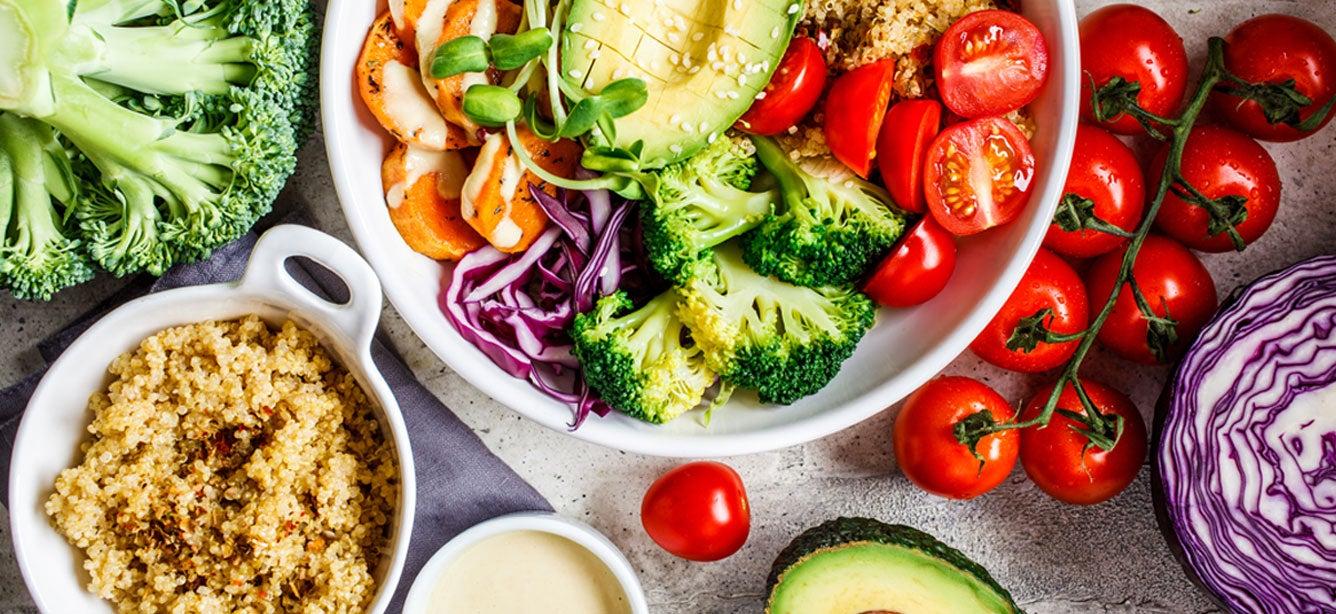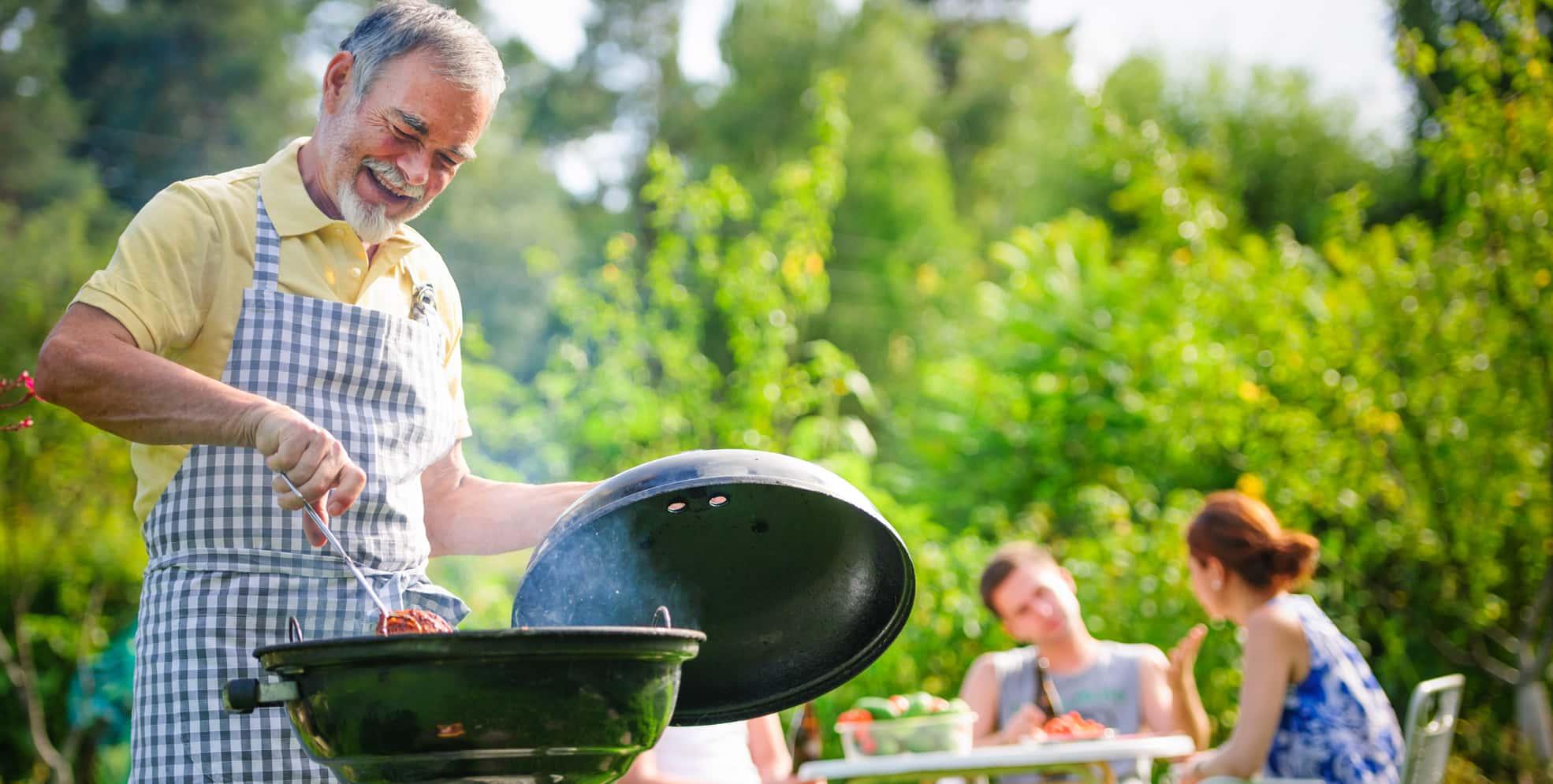
Related Topics
As we age, our nutrition needs change—and many older adults don’t eat as well as they should. This can result in malnutrition, vitamin deficiencies, and a number of chronic diseases. The good news is that it’s never too late to develop better nutrition habits based on the latest healthy eating guidelines. Following a balanced-diet meal plan can help you reduce your risk for chronic disease and stay active and independent for longer.
How do I start eating healthier?
1. Eat more whole foods, and limit processed foods.
Whole foods are foods that are close to their natural state when you purchase them; they are either minimally processed or not processed at all. These foods tend to be more satisfying and richer in vitamins, minerals, fiber, and antioxidants compared to processed foods. They also often have a lower glycemic load, meaning they cause a slower increase in blood sugar levels compared to processed foods. This helps you maintain steady energy levels while reducing your risk of insulin resistance and type 2 diabetes.
Some examples of whole foods include:
- Fruits and vegetables (fresh, frozen, unsweetened dried)
- Meat, poultry, and seafood
- Nuts, seeds, and beans
- Whole grains (e.g., brown rice and quinoa)
- Plain yogurt
- Eggs
The Healthy Eating Plate guidelines recommend filling half of your plate with vegetables, a quarter of your plate with whole grains, and the rest with lean protein like poultry, fish, and beans.
Processed foods undergo cooking, roasting, grinding, separation, boiling, or pasteurization to make them safe to eat, cheaper to produce, or shelf stable. They are designed to be tasty, convenient, and visually appealing. That's why processed foods are often high in salt, sugar, starches, refined grains, and preservatives as well as artificial colors and flavorings. These additives can have negative effects on health, such as increasing inflammation and raising the risk of obesity, heart disease, and other chronic conditions. Processed foods also tend to be low in nutrients and high in calories (which is why these foods are often referred to as “empty calories”).
Some examples of processed foods include:
- Breakfast cereals
- Packaged bread and bakery goods
- Canned fruits and vegetables
- Frozen dinners and meals
- Instant noodles and pasta meals
- Jarred pasta sauces and condiments
- Pre-packaged desserts and dessert mixes
- Soda and sugary drinks
- Packaged soups and broths
- Bottled salad dressings and marinades
- Frozen pizzas and pizza rolls
- Granola bars and protein bars
- Instant coffee and flavored coffee drinks
- Packaged snacks such as chips, crackers, and pretzels
- Deli and processed meats like bacon and sausage
- Cheese spreads and processed cheese slices
Try to limit your consumption of processed foods to just a few times a week.
2. Create a healthy-eating meal plan ahead of time.
When we're tired or stressed, cooking a healthy dinner is often the last thing we want to do—and it can be tempting to make unhealthy food choices. Meal planning done in advance, on the other hand, makes you better prepared to choose smart options. It can also help you stretch your budget further, since you're only buying the foods you need. Believe it or not, shopping according to your meal plan also helps save our planet because we prevent food waste and lower our environmental footprint with fewer trips to the store for forgotten or missing ingredients,” says Gretchen Tanbonliong, Associate Director of Health and Wellness at NCOA and a registered dietitian nutritionist.
To create your healthy-eating meal plan, start by finding nutritious recipes and make a shopping list.
Some good resources for recipes are:
- MyPlate Kitchen, a recipe resource from the USDA
- SNAP-Ed Recipes, featuring simple SNAP-friendly meal ideas
- Healthy Aging Recipes from EatingWell Magazine
No time for meal planning? Consider investing in a meal kit delivery service to bring nutritious ingredients and recipes, or prepared meals, straight to your doorstep.
3. Drink water with your meals and eat water-rich foods.
Water is critical to almost all bodily functions, from lubricating our joints to pumping blood to our heart—yet many older adults don’t drink enough. Certain medications can also affect your hydration levels. That’s why staying hydrated is such an important part of healthy aging.
Unless you are on a fluid-restricted diet prescribed by your health care provider, the National Academy of Medicine provides a general guide for healthy adults aged 19 years and over: nine (9) to 13 cups of fluid daily for healthy women and men aged 19 years and over. If you have trouble drinking fluids, try including water-rich foods with every meal. These include watermelon, cucumbers, lettuce, strawberries, tomatoes, and celery as well as low-sodium soups, broths, and stews.
4. Focus on getting enough protein to prevent muscle loss.
Between the ages of 40 and 80, adults lose up to 50% of their muscle mass. Since dietary protein helps us maintain and build muscle, healthy eating guidelines emphasize getting enough of this nutrient. An older adult who weighs 150 pounds should aim to consume 68-83 grams of dietary protein daily.
Your protein intake should be spread out over several meals to provide the most benefit. Try to get 25-30 grams at each meal, depending on how much you weigh. What are the best sources of dietary protein? Low fat dairy products, meat, seafood, and poultry are all good choices. If you follow a mostly plant-based diet, whole grains, seeds, nuts, beans, and lentils are other protein-rich options.
5. Eat fiber-rich foods.
Fiber is a type of carbohydrate that helps regulate our digestive system. It can even help reduce the risk of heart disease, type 2 diabetes, and certain cancers. Too little fiber can cause constipation and put you at greater risk for chronic disease. But about 95% of adults don't get enough in their daily diet.
The recommended daily intake of fiber for adults age 51-71+ is 30 grams for men and 21 grams for women. You can get your fiber from an array of plant-based and whole-grain foods, such as:
- Bananas
- Black beans
- Apples
- Quinoa
- Whole-grain bread
- Cabbage
- Almonds
6. Watch your sodium intake.
Consuming excess dietary sodium can cause your body to retain too much fluid, causing high blood pressure. This creates extra strain on your heart and can lead to heart failure, stroke, and kidney disease.
The American Heart Association recommends no more than 1,500 mg of sodium per day for most adults, especially those with high blood pressure. You can reduce your sodium intake by limiting processed foods and by seasoning your food with herbs and lemon juice instead of salt.
Eat healthier on a budget with SNAP
Fresh, nutritious, whole foods are often more expensive than processed, packaged foods. If you're on a tight budget, the Supplemental Nutrition Assistance Program (SNAP) can make it easier to stick to healthy eating guidelines.
Take Flora Wallace, for example. Wallace is 74 and has diabetes. She needs to buy nutritious food to stay healthy, but this was becoming more difficult with rising food prices. Enrolling in SNAP has given her room to breathe.
"When I go to the store now, I can buy healthy items like fruits, vegetables, meat, and other necessities,” Wallace told NCOA.
It's been a huge relief and it's much easier to balance my budget now," Flora said.
SNAP benefits can even be used online for grocery delivery and pickup through Walmart, Target, and Amazon as well as food delivery apps like Uber Eats and DoorDash. Though SNAP doesn't cover the delivery fee (if there is one), getting groceries delivered can save time and help ensure you always have healthy ingredients on hand. It’s also a good option if you have trouble getting transportation to and from the grocery store.
Want to know more about SNAP? We’ve made it easy with BenefitsCheckUp.org. This valuable resource can help you save money, age better, and worry less. It’s free, easy to use, and 100% confidential!
In addition to meal planning and seeing if you qualify for SNAP, some other strategies to afford healthy eating at home include:
- Shopping at discount grocery retailers (i.e., surplus stores)
- Clipping coupons (both print and digital)
- Joining store loyalty programs to take advantage of special discounts and promotions
- Choosing generic (store) brands over brand names
- Buying rice, pasta, flour, and spices in bulk to save money vs. buying smaller quantities




